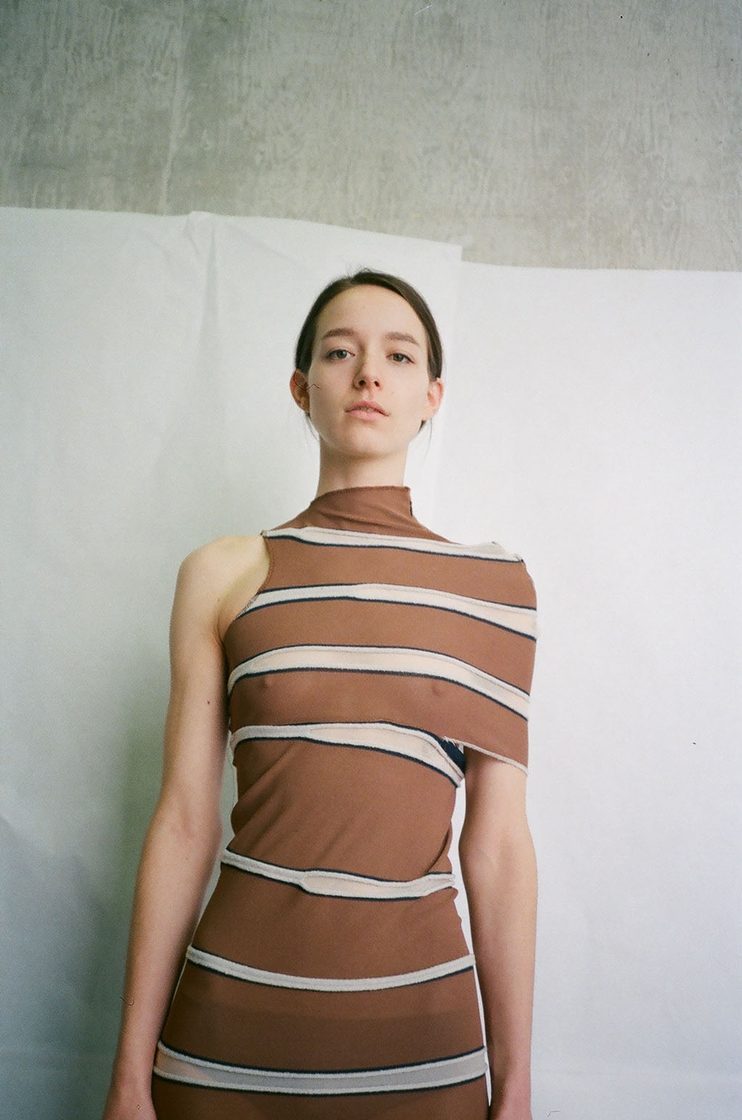And so she did. After training as a seamstress, the 27-year-old went on to study on the fashion design BA at Aalto University, from which she graduated this year. Still, Lampinen has come a long way from her original motivation to make clothes; it’s certainly hard to imagine them on Sailor Moon cosplayers. Instead, she has found herself in the Vogue Talents September issue, and her collection has already appeared in editorials for Re-Edition magazine and Elle Finland, among others.
Coverage like that is impressive for any BA collection, but Lampinen’s clothes – characterised most notably by their richly detailed textiles and dramatic shapes – turn heads. Skirts, coats, and blazers in dark, utilitarian colours are decorated with rows of chunky stitching, their fabrics warped and folded into imposingly big silhouettes that are often cinched at the waist with thick leather belts. Countless scraps of tartans and checks are woven together to create singular garments that sing with texture to create a kind of scarecrow effect that is nonetheless beautiful.























